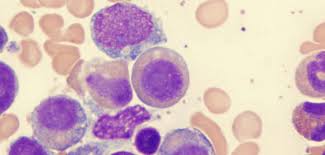Researchers at Texas Biomedical Research Institute (Texas Biomed) have discovered that a promising new cancer therapy may also be highly effective against tuberculosis (TB), one of the world’s most devastating infectious diseases. The findings, published in the journal Biomedicine & Pharmacotherapy, highlight the therapy’s ability to significantly reduce TB growth, even among drug-resistant bacteria.
The therapy under evaluation combines two molecules, one of which is already FDA-approved for use in cancer patients, while the other is currently undergoing Phase 1/2 clinical trials for cancer. These compounds facilitate the body’s natural cell death processes in targeted areas, including cancerous cells or, in this case, cells infected with Mycobacterium tuberculosis (M.tb), the bacterium responsible for TB.
TB is a leading cause of over 1.6 million deaths worldwide each year, primarily affecting the lungs. Treatment involves administering antibiotics for several months to control active infection, but drug resistance is increasingly prevalent, making treatment more challenging.
Dr. Schlesinger’s laboratory at Texas Biomed focuses on understanding the fundamental biological interactions between airborne-transmissible bacteria and humans, using these insights to identify potential treatment targets.
M.tb disrupts a normal cell death process known as apoptosis, enabling it to grow within immune cells called alveolar macrophages in the lungs. However, the recent study demonstrates that by inhibiting two critical proteins, MCL-1 and BCL-2, M.tb can no longer exploit the apoptosis process, consequently allowing macrophages to eliminate the bacterium.
Importantly, this process occurs within granuloma structures, the dense cellular clumps that the body forms around M.tb in an attempt to contain it. Granulomas pose a significant challenge for antibiotics and other treatments since they are difficult to penetrate, contributing to the persistent nature of M.tb.
The research team, led by Dr. Eusondia Arnett, a Staff Scientist at Texas Biomed, tested the impact of MCL-1 and BCL-2 inhibitors individually, together, and in combination with TB antibiotics on TB growth. When used in combination, the inhibitors proved more effective in limiting TB growth compared to using either one individually. Moreover, combining the inhibitors with antibiotics yielded greater effectiveness than using either the inhibitors or antibiotics alone.
The inhibitors combined with antibiotics controlled TB growth by up to 98%, according to Dr. Arnett, the first author of the study. Furthermore, the inhibitors demonstrated equal effectiveness in controlling drug-resistant TB and drug-susceptible TB. This emphasizes the power of host-directed therapy, which targets the human immune response instead of directly attacking the pathogen.
A crucial aspect of the research lies in the use of cellular models to assess the inhibitors’ effectiveness. Researchers employed human macrophages and a human granuloma model developed and refined over the past decade. By culturing human blood cells donated by volunteers with M.tb, the research team succeeded in replicating granuloma-like structures.
Dr. Arnett notes that granulomas are unique, dense environments that cannot be adequately replicated in mice. The cellular model represents an essential bridge for identifying compounds that can penetrate and remain active within granulomas before proceeding to the more time-consuming and costly animal research phase.
Dr. Schlesinger and Dr. Arnett have submitted a provisional patent for the combination therapy for infectious diseases. They plan to conduct additional cell, mouse, and nonhuman primate studies to further substantiate the therapy’s effectiveness and seek collaborations with industry partners. Given that safety studies for the inhibitors in cancer applications have already been completed or are ongoing, the researchers are optimistic about the therapy’s rapid transition to clinical trials.
*Note:
1. Source: Coherent Market Insights, Public sources, Desk research
2. We have leveraged AI tools to mine information and compile it



